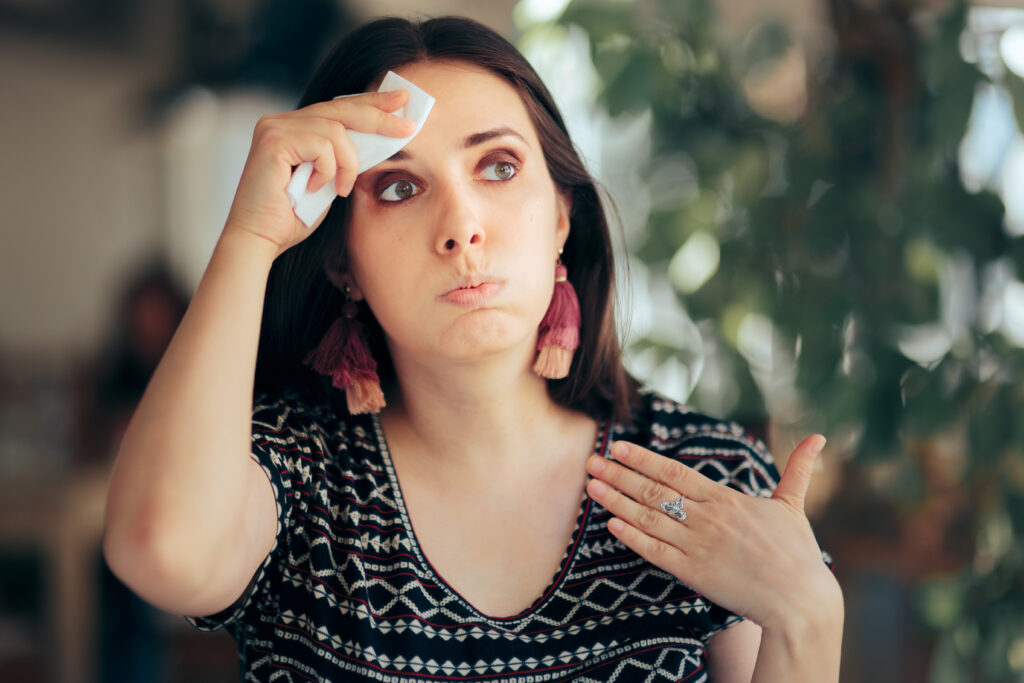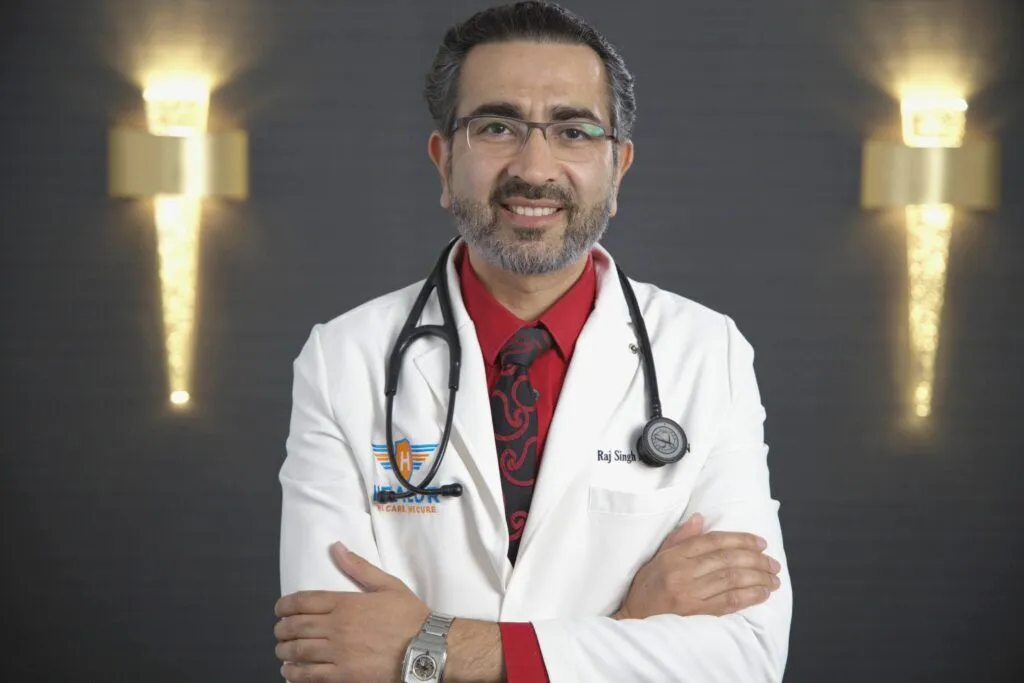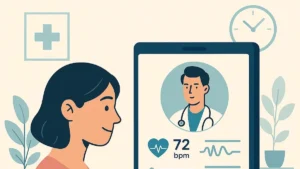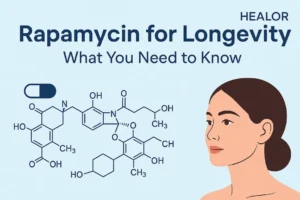
Hot flashes, a common symptom during menopause, often disrupt daily life with their sudden onset of intense warmth, primarily diagnosed through symptom descriptions. Primarily menopausal hot flashes have been traditionally treated with hormone replacement therapy involving estrogen, progesterone and testosterone. However, hormone therapy may not be for everyone and many are interested in exploring Non Hormonal Treatment for intense Hot Flashes. In this article, we will discuss the newly approved medication veozah and other nonhormonal options available for treatment of menopausal hot flashes.
Understanding Hot Flashes
Hot flashes, a hallmark symptom of menopause, are characterized by a sudden feeling of warmth, typically most intense over the face, neck, and chest, often accompanied by skin reddening and a rapid heartbeat. These episodes are primarily attributed to hormonal changes, particularly decreased estrogen levels, occurring before, during, and after menopause. Lifestyle factors including smoking, obesity, and racial demographics play a significant role, with black women experiencing hot flashes more commonly compared to Asian women.
- Risk Factors and Triggers:
- Hormonal Changes: Imbalance with estrogen, testosterone, progesterone.
- Lifestyle Factors: Smoking, obesity, and diet.
- Environmental Triggers: Hot weather, heated rooms, and tight clothing.
- Consumption Habits: Caffeine, alcohol, and spicy foods.
Hot flashes disrupt daily activities, increase the risk of heart disease, and cause long-term sleep disruptions, particularly due to night sweats. The severity and duration of hot flashes vary among individuals, lasting from 6 months to over 10 years in some cases.
The Role of Neurokinin in Hot Flashes
In the quest for effective Non Hormonal Treatment of Hot Flashes, the role of Neurokinin B (NKB) and its receptors has emerged as a pivotal point of interest. Fezolinetant, in particular, targets the neurokinin 3 receptor, aiming to restore the brain’s regulation of body temperature, a crucial mechanism thought to be disrupted during menopause. As a nonhormonal oral medication, Fezolinetant offers a new frontier in the management of severe hot flashes, embodying the shift towards targeting neural pathways to alleviate symptoms without hormonal intervention.
Non Hormonal Treatment for intense Hot Flashes:Pharmacological Options
Antidepressants and SSRIs:
- Paroxetine (Brisdelle), the only FDA-approved non-hormonal treatment specifically for hot flashes, demonstrates the effectiveness of SSRIs in managing symptoms.
- Other SSRIs and SNRIs, including venlafaxine, citalopram, and escitalopram, have been shown to reduce hot flashes by 19 to 60 percent, offering a viable alternative for those who cannot take estrogen.
- Anticonvulsants and Other Medications:
- Gabapentin (Neurontin) and pregabalin (Lyrica), primarily used for nerve pain, have been moderately effective in reducing hot flashes, with side effects like drowsiness and dizziness.
- Oxybutynin (Ditropan XL, Oxytrol), used for overactive bladder, and Fezolinetant (Veozah), a novel nonhormonal medication, provide options for those seeking alternatives to traditional hormone therapy.
- Progesterone and Non-Traditional Options:
- While progesterone can reduce hot flashes about as well as estrogen, it’s often not effective without balancing estrogen and testosterone.
Fezolinetant: A New Frontier
Fezolinetant (Veozah), a groundbreaking nonhormonal medication, marks a significant advancement in the treatment of moderate to severe hot flashes associated with menopause. Distinguished by its innovative mechanism of action, Fezolinetant targets the neurokinin 3 (NK3) receptor within the brain, aiming to recalibrate the body’s temperature regulation disrupted during menopause. This novel approach offers hope for those unable or unwilling to pursue hormone-based therapies.
Key Features of Fezolinetant (Veozah):
- Administration and Dosage: 45 mg Taken orally daily
- Common Side Effects: Abdominal pain, diarrhea and trouble sleeping are the most common side effects seen in up to a 3rd of patients. Back pain and recurrence of hot flashes seen in 15-20% of cases. Elevated hepatic transaminases may indicate liver injury, necessitating caution. Taking the medication with a full meal may help reduce nausea
- Contraindications: Not recommended for patients with known cirrhosis, severe renal damage, or end-stage renal disease. Additionally, it cannot be used with CYP1A2 inhibitors such as antofloxacin, carbamazepine, dihydralazine, furafylline, isoniazid, rofecoxib, clorgyline, thiabendazole, and zileuton.
- Avoid: caffeine and chocolates to reduce side effects
Natural and Lifestyle Alternatives
In addressing Non Hormonal Treatment of Hot Flashes, exploring natural and lifestyle alternatives offers a complementary approach to pharmacological options, providing a holistic path towards symptom management. These strategies emphasize modifications in daily habits and environmental adjustments to mitigate the discomfort associated with hot flashes.
Lifestyle Modifications and Environmental Adjustments:
- Dress in Layers: Facilitates quick adaptation to changing body temperatures.
- Portable Fans: Offer immediate relief during sudden hot flash episodes.
- Avoid Triggers: Including alcohol, spicy foods, and caffeine, which can exacerbate symptoms.
- Quit Smoking: Smoking cessation is linked to reduced frequency and severity of hot flashes.
- Healthy Weight Maintenance: A balanced diet and regular exercise can help in managing symptoms effectively.
Mind-Body Practices and Dietary Considerations:
- Mindfulness and Meditation: Techniques such as deep breathing, stress management, and guided imagery can aid in reducing the severity of hot flashes.
- Caution with Supplements: Herbal therapies like black cohosh and soy isoflavones lack conclusive evidence for effectiveness and may interact with prescription medications. Consulting healthcare providers before usage is crucial.
Exercise and Stress Management:
- Regular physical activity and practices such as yoga can improve overall well-being, potentially reducing irritability and improving sleep quality, which can be disrupted by hot flashes. Stress management techniques further contribute to a holistic approach in mitigating menopausal symptoms.
Conclusion
Nonhormonal treatments for intense hot flashes a game changer for patients who are not candidates for hormone therapy due to history of blood clots, cancers or adjust concern with side effects of hormone based therapy. Despite side effects, These newer medications offer area of hope for woman suffering from menopausal hot flashes. Consult with your primary care doctor or hormone expert to discuss about these now Will treatments
FAQs
What are the most effective non-hormonal remedies for hot flashes?
Selective serotonin receptor inhibitors (SSRIs) are the most commonly used class of antidepressants for treating hot flashes. Paroxetine, with the brand name Brisdelle, is an SSRI that is the only non-hormonal medication specifically approved in the United States to treat hot flashes.
Is there a new non-hormonal medication for hot flashes?
Yes, Veozah is a new non-hormonal medication that targets the neural activity responsible for hot flashes during menopause. It is recommended to take one 45 milligram pill of Veozah orally, once a day, with or without food, at the same time each day.
How can one reduce the intensity of hot flashes?
To make hot flashes less severe, consider making lifestyle adjustments such as dressing in removable layers, carrying a portable fan, avoiding alcohol, spicy foods, and caffeine, quitting smoking, and maintaining a healthy weight.
What treatments are available for hot flushes besides hormone replacement therapy (HRT)?
For those unable or unwilling to take HRT, alternative prescribable medications include clonidine, a blood pressure medication that also helps with hot flushes, and gabapentin and pregabalin, which are used for treating migraines, pain, anxiety, and other conditions.








